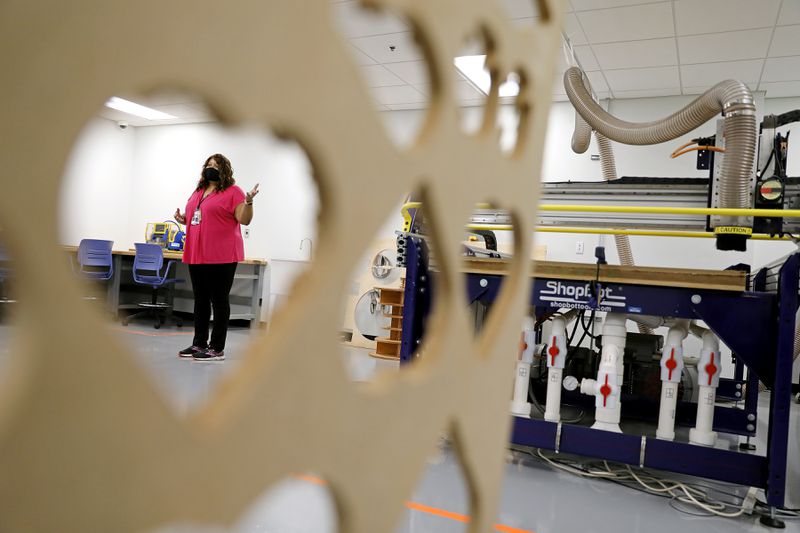
Short-Range Forecasting of COVID-19 During Early Onset at County, Health District, and State Geographic Levels Using Seven Methods: Comparative Forecasting Study
March 23, 2021
Hampton Roads students explore coding, music production, entrepreneurship in new program
April 5, 2021
Virginia Tech researchers aim to use 5G networks to track items as they come and go.
Patrick Tucker
BY PATRICK TUCKER
TECHNOLOGY EDITOR
MARCH 29, 2021
In the warehouse of the future, nothing is ever lost. A massive web of 5G-connected sensors will track every object all the time everywhere, slashing the time required to manage and restock items. The Defense Department has awarded $13 million to a Virginia Tech-led team to build just such a smart warehouse for the Marine Corps. If it succeeds, it will be a prototype for other smart warehouses for DoD — and possibly other organizations around the globe.
Building an energy-efficient and secure warehouse network isn’t as simple as simply setting up a lot of antennas, according to Sachin Shetty, the executive director of the Center for Secure & Intelligent Critical Systems at Old Dominion University’s Virginia Modeling, Analysis, and Simulation Center. Shetty says that current 5G network architectures can’t support the sort of sensor networks needed to locate objects with the required precision, nor are they resilient enough to cyber attack.
So Shetty’s team is figuring out new ways to link sensors through the next-gen networking technology.
“Our proposed 5G network enhancements will result in an efficient, secure 5G network architecture that will provide accurate tracking of warehouse assets, communication resilience in diverse channel conditions and near real-time information delivery,” he said.
Over the next three years, Shetty and his team will work with companies and academic institutions within the Commonwealth Cyber Initiative to create a resilient distributed positioning network, or RDPN, at the Marine Corps logistics base in Albany, Georgia. An RPDN uses distributed sensors to track items inside the warehouse with precision positioning. They’ll also create a distributed coherent multi-input, multi-output network, or DCM. This is a technique for boosting antenna strength by combining the signals from multiple short antennas, attached to 5G base stations, into a larger virtual antenna. That, in turn, enables much better connectivity between the network inside the warehouse and outside.
“This effort to realize a 5G-empowered smart warehouse…will serve as a prototype capability which has the potential to be federated across multiple sites and installations across the DoD,” Shetty said.
The smart warehouse is one of several 5G experiments that the Defense Department is undertaking as part of an effort to prove new 5G concepts. At Joint Base Lewis-McChord in Washington, they’re looking at augmented and virtual reality for training, and dynamic spectrum-sharing at Hill Air Force Base in Utah.


